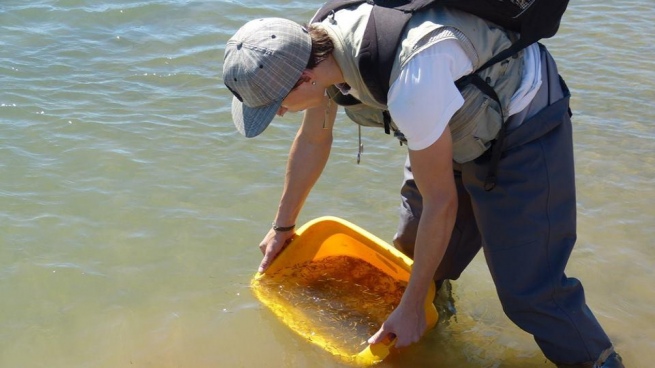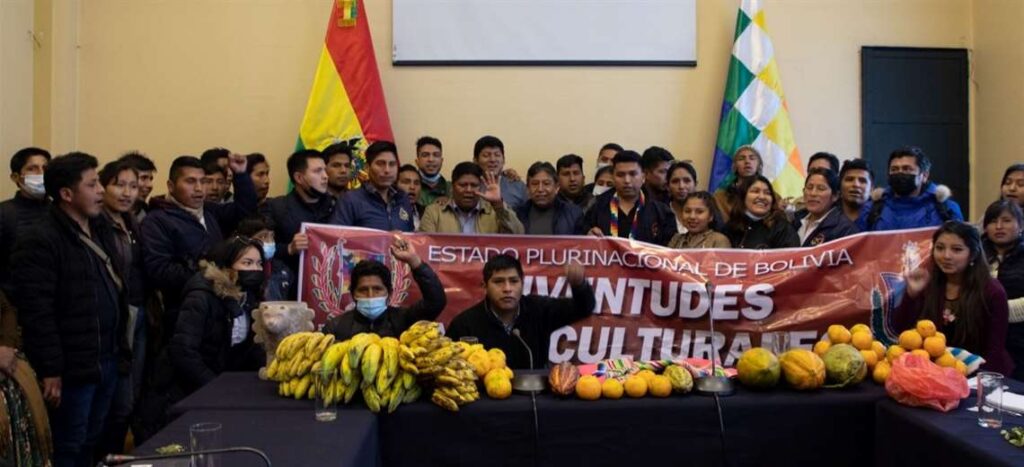The Newsan Group and the Salmon Trout company are developing the rainbow trout farming project in the Alicurá Reservoir, on the border between the provinces of Río Negro and Neuquén, with the aim not only of exporting but also of supplying the domestic market, and even substitute imports from Chile.
The project, which foresees an investment of US$ 22 million and aims to reach a volume of 13,000 tons in its first five years, will also involve the gradual generation of 250 new jobs, not only in the crops but also in a new processing plant to settle in Bariloche, also allowing the shipment of fresh products to different markets.
In this sense, in recent days the company announced to the Minister of Agriculture, Livestock and Fisheries of the Nation, Julián Domínguez, the realization of the first export of farmed rainbow trout to Japan.
The project is developed in the vicinity of the Alicurá reservoir, located on the Limay River, which joins the provinces of Neuquén and Río Negro, in disease-free waters certified by the National Service for Agrifood Health and Quality (Senasa) and the World Organization for Animal Health (OIE).

The rainbow trout, a “feral” species totally incorporated into the region’s ecosystem, has been raised by small and medium producers for 35 years.
The project is technically led by the Conicet researcher Gabriel Morales, and executed in harmony with the environment and the welfare of the fish, without resorting to antiparasitics or antibiotics.
“It is a product of excellence, totally national, developed from trout with selected genetics in the provinces, raised with balanced feed manufactured in our country and processed in plants dedicated to adding value to export fish,” Morales said.
The farming process is carried out in cages located on the river, in which the fish grow until harvest time, and is divided into five stages: incubation of eggs and fingerlings in the hatchery (three months), rearing of juveniles (four months), fattening (14 months), harvest and production process in plants to generate value-added product.
“Argentina’s natural conditions for this type of crop represent a great opportunity and we believe that this will be the first of many exports, contributing to foreign exchange earnings, the development of regional economies and the growth of a strategic industry with special care for the ecosystem. “, said Miguel Glikman, director of Newsan Food.
Newsan Food, Newsan’s business unit dedicated to food exports, was created in 2014 with the aim of generating foreign exchange to offset the company’s trade balance.
It currently operates more than 40 fishing vessels -of which nine are its own- and has 12 processing plants and three cold rooms.
Eight years after its creation, Newsan Food exports to more than 70 countries -including Spain, the United States, China, Italy, Japan, Brazil, Russia, Thailand, Singapore, Peru, Vietnam, Poland, France, Ukraine and Chile- shrimp, black hake and squid, as well as rainbow trout from its recent aquaculture project.
In 2021, the company also started the project for the cultivation of mussels of the native species Mytilus Chilensis in Puerto Almanza, on the Beagle Channel in the province of Tierra del Fuego, a fishing village that was created during the socioeconomic crisis of 2001.
This project, which implies an investment of $200 million, is currently in the development of the first stage with the installation of the cultivation structure for collecting seeds that begins the cultivation of mussels, as reported.


















